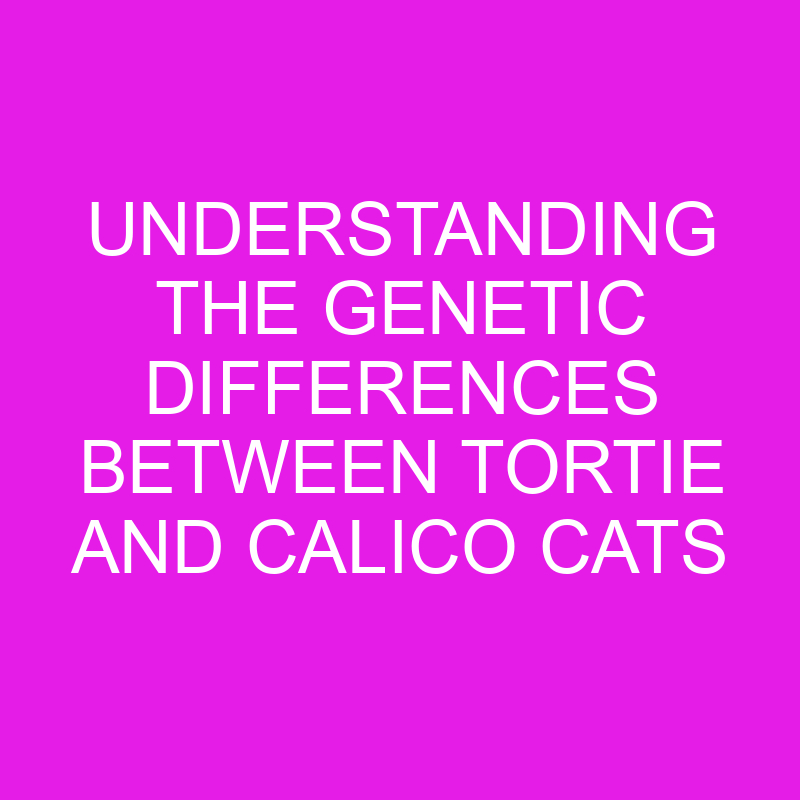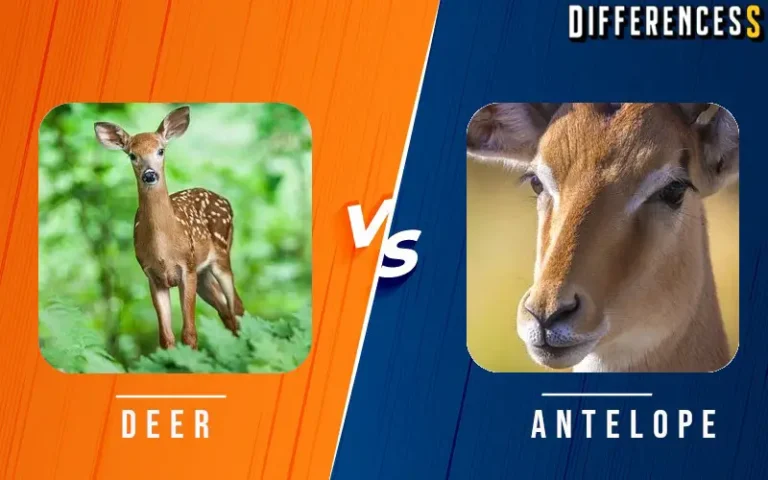
Hey there! Are you a cat lover looking to expand your knowledge about different feline coat patterns? Well, you’ve come to the right place! In this article, I’ll be diving into the fascinating world of tortoiseshell (tortie) and calico cats, and unraveling the differences between these two beautiful patterns. So, let’s jump right in and explore what sets these adorable kitties apart!
When it comes to tortoiseshell and calico cats, many people often confuse the two due to their similar patchwork patterns. However, there are some key distinctions that make each of these patterns unique. From the colors and patterns of their fur to the genetics behind their coat variations, we’ll be exploring it all. By the end of this article, you’ll have a clear understanding of the differences between tortie and calico cats, and you’ll be able to impress your fellow cat enthusiasts with your newfound knowledge!
Post Contents
Tortoiseshell (Tortie) Cats
Tortoiseshell cats, often referred to as “torties,” are known for their unique coat pattern. These cats have a beautiful combination of colors that create a mosaic-like design on their fur. But what exactly makes a cat a tortie?
Colors and Patterns
Tortoiseshell cats primarily have a mix of black and orange fur, with the colors blending together in a marbled or patched pattern. While black and orange are the most common colors seen in torties, some cats may also have shades of cream, brown, or even gray mixed in.
Each tortie cat has a distinct pattern and no two torties are exactly alike. Some tortoiseshell cats may have larger patches of one color, while others may be more evenly distributed. The pattern can vary from cat to cat, giving each tortie a truly unique look.
Genetics of Torties
The genetics behind tortoiseshell cats are fascinating. Unlike other coat patterns, torties are almost exclusively female. This is because the genes responsible for producing the tortie pattern are connected to the X chromosome.
Female cats have two X chromosomes, while males have one X and one Y chromosome. This means that male cats can only inherit one version of the tortie gene, either for orange or for black. As a result, male tortoiseshell cats are extremely rare and often have chromosomal abnormalities.
Personality Traits
While coat patterns don’t determine a cat’s personality, torties are often said to have a unique temperament. Tortoiseshell cats are known for their strong-willed and independent nature. They can be affectionate and loving, but also have a bit of a feisty streak. Some owners claim that torties have a “tortitude” that sets them apart from other cats.
Tortoiseshell cats, or torties, are characterized by their beautiful mix of black and orange fur in a marbled or patched pattern. These unique cats, primarily females due to their genetics, have distinct personalities that make them stand out from the crowd.
Calico Cats
Calico cats are another type of cat with a unique coat pattern. While torties have a mix of black and orange fur, calicos have three colors in their coat – black, orange, and white. The three colors are typically in distinct patches rather than blended together like in torties.
One interesting fact about calico cats is that their coat color is not linked to a specific breed. Calico is actually a coat pattern that can be seen in many different breeds, including domestic shorthairs, Persians, and Maine Coons. This means that you can find calico cats with different body shapes, coat lengths, and facial features.
Just like torties, the coat pattern of calico cats is also determined by the X chromosome. The presence of the orange color in their coat is due to the gene responsible for producing orange fur. The black color is determined by another gene, and the white color is influenced by yet another gene. The combination of these genes results in the unique calico pattern.
It’s important to note that, similar to torties, calico cats are almost exclusively female. This is because the genes for the calico pattern are also located on the X chromosome. Male calico cats are extremely rare and are typically the result of genetic anomalies, such as having an extra X chromosome. These male calicos are usually sterile and have health issues due to their genetic abnormalities.
In terms of personality, calico cats are known for their strong-willed nature and independent personality, much like torties. They are often described as sassy, feisty, and bold. However, it’s important to remember that every cat is an individual and may have their own unique personality traits regardless of their coat color or pattern.
Overall, calico cats are beautiful and distinctive felines with their tri-color coat pattern. Their genetics, like torties, contribute to their rarity and the uniqueness of their appearance. Whether you have a tortie or a calico cat, you can expect to have an independent and strong-willed companion by your side.
Similarities between Tortie and Calico Cats
Tortie and calico cats may have distinct coat patterns, but they share some intriguing similarities as well. Here are a few similarities between these two beautiful and unique feline breeds:
- Coat Colors
Both tortie and calico cats have coats with a mix of black, orange, and white patches. While tortoiseshell cats may have more variation in their coloring, calico cats also exhibit a striking combination of these three colors, typically in distinct patches. - X Chromosome Determination
Just like tortie cats, the coat pattern of calico cats is also determined by the X chromosome. This means that both male and female torties and calicos inherit two X chromosomes, while males usually have one X and one Y chromosome. - Females are Common
While male torties and calicos do exist, they are extremely rare. In fact, calico cats are almost exclusively female. The reason for this lies in genetics – the coat pattern gene is linked to the X chromosome, and female cats have two X chromosomes. This is why you’ll find predominantly female torties and calicos. - Strong-Willed and Independent Nature
One trait that sets both tortie and calico cats apart is their strong-willed and independent nature. These beautiful felines often have vibrant personalities and are known for being fiercely independent. They are not afraid to express their opinions and will let you know when they want attention or prefer to be left alone.
While tortie and calico cats share these similarities, it’s important to remember that every cat, regardless of their coat color or pattern, is a unique individual with their own personality traits. So, whether you have a tortie, a calico, or any other type of cat, cherish their individuality and enjoy the special bond you share with them.
Remember, the beauty of these cats lies not just in their fascinating coat colors but also in their distinct personalities.
Differences in Fur Colors and Patterns
When it comes to the fur colors and patterns of tortoiseshell (tortie) cats and calico cats, there are some notable differences to be aware of. Let’s dive into the unique characteristics that set these two types of cats apart.
Tortie Cats:
Tortie cats have a distinctive coat pattern that consists of two colors – a combination of black and orange. These colors can be blended together in a variety of ways, creating a beautiful mosaic on their fur. The patches of black and orange can appear in random patterns, giving each tortie cat a one-of-a-kind appearance.
Calico Cats:
On the other hand, calico cats have a coat pattern that goes beyond the two-color combination found in torties. Calico cats exhibit a colorful trio of black, orange, and white in their fur. Unlike torties, the white patches are typically more prevalent and defined, creating a striking contrast against the black and orange patches.
Unique Color Arrangements:
While both torties and calicos have distinct coat patterns, the way these colors are arranged on their fur can vary. Tortie cats often have a more blended or brindle-like appearance, with the black and orange colors blending together in a marbled effect. Calico cats, on the other hand, tend to have more distinct patches of color, with the white patches standing out prominently.
Genetic Determination:
The fur colors and patterns of both tortie and calico cats are determined by the X chromosome. This genetic phenomenon is known as X-inactivation or lyonization. It means that the coat pattern is determined by the random inactivation of one of the X chromosomes in each cell during early development.
Genetics of Tortie and Calico Cats
When it comes to understanding the unique coat patterns of tortie and calico cats, we need to dive into their genetics. These fascinating felines owe their distinctive colors to a genetic phenomenon called X-inactivation, also known as lyonization. Let me explain how it works.
In cats, the genes responsible for coat color are located on the X chromosome. As you may know, female cats have two X chromosomes (XX), while males have one X and one Y chromosome (XY). This means that tortie and calico cats are almost always female.
During early embryonic development, one of the X chromosomes in female cats is randomly inactivated in each cell. This inactivation results in patches of cells with either the black or orange gene activated, leading to the distinct coat patterns we see in torties and calicos.
- Tortoiseshell cats have both the black (eumelanin) and orange (pheomelanin) pigments present in their fur. These colors are mixed together in various ways, giving torties their unique blend of black and orange.
- Calico cats, on the other hand, have the addition of white pigment (non-pigmented hair) in their coat. The black, orange, and white colors are arranged in distinct patches, with the white patches being more prevalent and defined.
- The specific arrangement of colors on tortie and calico cats can vary greatly, making each cat’s coat pattern truly one-of-a-kind.
- It’s important to note that not all female cats with two X chromosomes will display tortie or calico patterns. Some may have solid black or solid orange fur, depending on which X chromosome is inactivated in each cell.
Understanding the genetics behind the coat patterns of tortie and calico cats adds another layer of appreciation for these unique felines. So next time you admire your tortie or calico companion, remember that their extraordinary coat is a result of the fascinating world of feline genetics.
Conclusion
Understanding the genetics behind tortie and calico cats reveals the fascinating complexity of their coat patterns. These unique felines owe their distinctive colors to a genetic phenomenon called X-inactivation or lyonization. During early embryonic development, one of the X chromosomes in female cats is randomly inactivated in each cell, resulting in patches of cells with either the black or orange gene activated.
Tortie cats display a beautiful blend of black and orange fur, while calico cats have the addition of white pigment in their coat. The specific arrangement of colors on tortie and calico cats can vary greatly, making each cat’s coat pattern truly one-of-a-kind.
It’s important to note that not all female cats with two X chromosomes will display tortie or calico patterns. The genetics behind these coat patterns add another layer of appreciation for these unique felines, showcasing the intricate workings of nature.
By delving into the genetics of tortie and calico cats, we gain a deeper understanding and appreciation for the beauty and complexity of these remarkable creatures.
Frequently Asked Questions
Q: How do tortoise shell (tortie) and calico cats get their unique coat patterns?
A: Tortie and calico cats get their unique coat patterns through a genetic phenomenon called X-inactivation or lyonization. During early embryonic development, one of their two X chromosomes is randomly inactivated in each cell. This results in patches of cells with either the black or orange gene activated, creating the distinct coat patterns seen in torties and calicos.
Q: What is the difference between tortie and calico cats?
A: The main difference between tortie and calico cats is the presence of white pigment in the coat. Tortie cats have a blend of black and orange fur, while calico cats have the addition of white pigment. This white pigment adds another layer to their coat pattern, resulting in a unique and often tricolor appearance.
Q: Are all female cats with two X chromosomes tortie or calico?
A: No, not all female cats with two X chromosomes display tortie or calico patterns. While tortie and calico patterns are more commonly seen in female cats due to the random X-inactivation process, other factors, such as specific genes and genetic variations, can influence whether a cat exhibits these patterns or not.
Q: Are tortie and calico coat patterns unique to specific breeds of cats?
A: No, tortie and calico coat patterns can be found in various breeds and even in mixed breed cats. The specific arrangement and intensity of colors can vary greatly, making each cat’s coat pattern unique. This genetic phenomenon can occur in any female cat that possesses two X chromosomes, regardless of breed.






